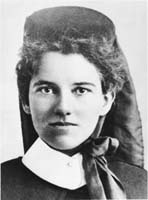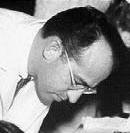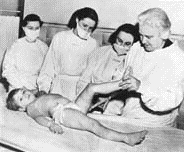Creates new realities
You may already have guessed that the term “ideas,” as applied to
this level, is no more than a handy label. The other names — feeling,
belief, fact — are not very ambiguous in their meaning, but describing the
entire human creative endeavor as “ideas” is only a convenient word,
not a full description.
This is true because the idea level encompasses all those disciplines that
shape the human world. It is the endeavor to understand our relationship with
nature and build the delicate partnership between ourselves and nature.
It is not possible to overemphasize the difference between the idea level and
the levels below it — there is little basis for comparison. Unlike the
true believers discussed earlier, and those in the thrall of facts, alphas
(people at the idea level) actually explore the world as they find it and learn
how to maximize their own effectiveness in creating new knowledge. Alphas do
this by minimizing the occasional negative effects of the lower levels in their
own lives.
For example, a doctor who fainted at the sight of blood would not be very
effective. For this reason, doctors learn to control their own feelings to some
extent, replacing one feeling (shock and fear at the sight of blood) with
another (a passion for the practice of medicine).
In a similar way, to produce useful results scientists must avoid their own
emotional biases, fixed beliefs and an excessive reliance on facts. The
discipline of science contains procedures to minimize the effect of these
subjective forces, and the structure of the scientific method reveals our
knowledge of our own vulnerabilities.
The safeguards built into science are meant to avoid the intellectual traps
described in the previous sections, and instead focus our attention on —
not a subjective, distorted view of nature — but nature herself.

Sister Kenny
Here's an example. In 1952, 58,000 cases of poliomyelitis, a virus-borne
disease, occurred in the US. Polio is a disease that paralyzes those it doesn't
kill outright. This is the story of how two very capable individuals —
people operating at different levels — dealt with this disease.
Sister Kenny
Sister Kenny, a health practitioner originally from Australia, treated many
cases of polio during her long, very successful career. She developed clinical
methods for treating polio's paralytic symptoms that minimized the loss of
function, the paralysis, that so often accompanied the disease.
Sister Kenny became famous for her novel therapies, therapies that confronted
the more traditional (and largely ineffective) methods practiced by others.
Many people owe their ability to function, even their lives, to the methods she
pioneered.
Jonas Salk
In 1955, using the methods of science, Jonas Salk developed a vaccine that
prevented polio. His vaccine, and to some extent the later live-virus Sabin
vaccine, virtually wiped out polio. In the US, polio cases went from 58,000 in
1952 to less than 10 in 1961.

Jonas Salk
Salk knew that polio was caused by a virus, and that, if the body's own
defenses could be prepared in advance using a dead copy of the virus, the real
virus would not have a chance. The first virus vaccine was developed by Jenner
in the early 1800s, used against smallpox. Jenner discovered that cowpox, a
closely related virus that is harmless to humans, would prevent smallpox if
people were inoculated with it. Salk built on this idea, using more modern
methods.
The methods developed by Jenner, Salk and others are now the standard treatment
for viral diseases. This treatment is possible because we know
why
viral diseases come about. We understand the life cycle of viruses, and we
know how to control viral infection for many diseases. Today, as a result of
this knowledge, widespread polio epidemics are a historical footnote, and
smallpox has been entirely eradicated — wiped out completely by 1980.
Discussion

Polio Clinic
I should mention that the “sister” in Sister Kenny's name is not a
religious title, it is an honorific that she adopted while she was a member of
an organization of nurses — she was not a nun. So this story isn't really
a medical version of “Inherit the Wind” (a play that dramatizes the
trial of a schoolteacher who taught evolution), a classic conflict between
religion and science — not at all. Sister Kenny was quite a character,
very effective, patiently tolerating many stupid opponents over the years. Her
personal motto was “It's better to be a lion for a day than a sheep all
your life.”
Nevertheless, the polio story starkly contrasts the idea-based and fact-based
approaches. Sister Kenny treated the symptoms of polio. Over time, because of
direct clinical experience, she learned increasingly effective treatments for
polio's symptoms. But if her methods were our total understanding of the
disease, we would have Sister Kenny clinics in every neighborhood in the
country and we would expect to see very many polio-disabled people. If the
trend set in 1952 had continued unabated, today we would see as many new polio
cases every year as the total US death toll for the entire Vietnam War.
But this is not what happened. Jonas Salk developed a cure for polio. He used
the methods of science and the fledgling discipline of microbiology to create
an effective treatment for the disease, not just the symptoms.
Here is a comparison of the two approaches:
|
Sister Kenny's approach evolved over time, was based on a gradual accumulation of experience, and was evolutionary. It was based on facts.
|
Jonas Salk's approach attacked the root problem, it did so with imagination and vision, and was revolutionary. It was based on ideas.
|
|
Sister Kenny's method was reactive — it was developed as a response, a practical solution to the problems caused by polio's symptoms.
|
Jonas Salk's method was proactive — it looked entirely beyond the immediate issue of the victims of polio, and found a solution to the disease itself.
|
Basically, the polio story is a story about science. Although it is not the
only one, science is a good example of the idea level of human experience.
Science is also misunderstood by many people — some think it is a vast
collection of facts, or a rigid search for truth using telescopes and computers.
Science actually bears little resemblance to the popular view. For example,
finding the truth is not the goal in science — in fact, truth is not even
a proper word in scientific discussions.
Science relies on evidence — observations — to support or falsify
theories about reality. Sometimes a theory is shaped before any evidence is
collected, sometimes the other way around, but theory and evidence are both
important. A theory without any evidence may be interesting, but it is not
science.
Science is an open, basically anarchistic, system. Ideas have the highest
priority, and those with supporting evidence become the new science. Authority
means precisely nothing. This is how a lowly patent clerk, working in his spare
time in Berne, Switzerland, could overthrow all the physical theory of his time
with a few short articles (Einstein).
And scientific theories are never finally declared “true.” This is
why, in science, truth is not an appropriate word, along with common brainless
expressions
like “a proven scientific fact.” A scientific theory can be
disproven, but it can never be declared proven. There is always the chance that
new evidence will appear to disprove a theory, or a new, better theory may come
along that explains more things, predicts more observations, and retires the
prevailing theory.
This statement about science, that theories are never declared proven, never
become laws, comes about because the core of science is not the theories or the
evidence, but the
process.
Science doubts everything, re-examines everything, tries to avoid hidden
assumptions. It tries to find alternative explanations, tries to create new
theories that describe more, or are more “efficient” — meaning
theories that use fewer rules to explain more of reality.
Efficiency
The car stopping-distance example in the “facts” section of this
article is a trivial example of an “efficient” explanation (kinetic
energy) compared to an inefficient one (a list of facts). Without the
kinetic-energy explanation, people would have to carry around a list of
stopping distances — imagine it! In fact, guess what? Americans do just
that. In this country, young drivers are handed a list of stopping distances
without a word of explanation.
But when this happens, students are not surprised in the least — most of
American education consists of handing out of lists of facts. This is just
another list, another fact to add to the collection. By the way, here's the
list:
|
Speed MPH
|
Reaction Distance
|
Braking Distance
|
Total Distance
|
|
20
|
44
|
20
|
64
|
|
40
|
88
|
80
|
168
|
|
60
|
132
|
180
|
312
|
|
80
|
176
|
320
|
496
|
|
100
|
220
|
500
|
720
|
|
120
|
264
|
720
|
984
|
This list gives distances in feet for automobile speeds in miles per hour. The
reaction time is assumed to be 1.5 seconds, a conservative assumption now that
car radios are standard equipment. The results apply to dry, level asphalt.
It is important to realize that, without the key idea (kinetic energy),
creating this list is like tearing a leaf from a tree — it promptly dies.
The leaf is still there, it has marks on it, but it is quite dead.
American education is based on a teacher handing out leaves ripped from the
knowledge tree, which the teacher briefly glimpsed, once.
Can someone please tell me how the above list constitutes an improvement over:
(1) Braking distance (feet): bd = (s^2) / 20
Where s = the car's speed in miles per hour. Then
(2) Reaction distance (feet): rd = t * s * 22/15
Where t = reaction time, and s = the car's speed in miles per hour.
Combining the two equations:
Total stopping distance (feet): d = (s^2) / 20 + s * t * 22/ 15
Many educated people in the Western world will say “Indeed! Why would
someone want the list when the equation is available?“ But not in America —
for most Americans, mathematics is not learned beyond some simple exercises
like memorizing multiplication tables, learning long division and, for some
students, a little algebra later on. But after school lets out, in everyday
American life, people don't use mathematics. That's for scientists.
People who have been properly educated will glance at this equation, see the
“s^2” term, and say “Whoa! Stopping distance increases roughly
as the square of speed!” Guess how many Americans know this about their
beloved cars? The same number who know people don't speak Latin in Latin
America — almost none.
I wonder — how many American teenagers have been handed the
stopping-distance list without comment, only to die later because they never
learned the idea that created the list?
Efficiency is a good general term to describe the idea level. People who create
new realities have more than imagination going for them — they also know
how to be efficient. And know this — for each idea, there is an optimally
efficient expression, as shown above.
The difference in size and processing time between a set of dependent facts,
and the idea that creates the facts, is why the idea is more efficient. And in
one of the great ironies of intellect,
the efficient expression, the idea, often reveals meanings the inefficient one
cannot.
If you have only the car stopping-distance list, you are not likely to realize
it contains within it the kinetic-energy idea. But if you ascend to the level
of the idea, you might use it to compute the size and speed of the asteroid
thought to have killed off the dinosaurs, or anything else that has mass and
moves. Your mind needs much less storage space for the kinetic-energy idea than
for the list, but the idea is much more powerful.
This is how ideas work. This is how you work, at the alpha level.


 Share This Page
Share This Page

 Share This Page
Share This Page





 Share This Page
Share This Page